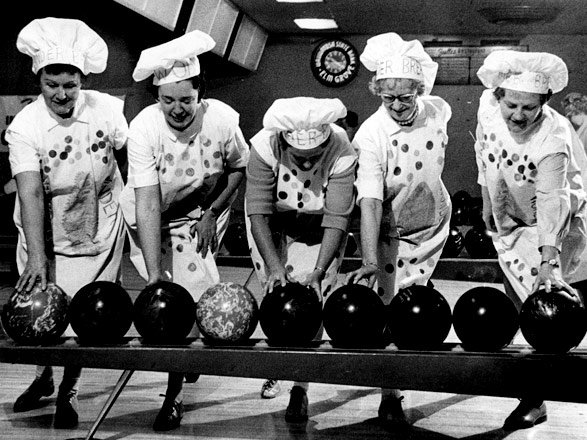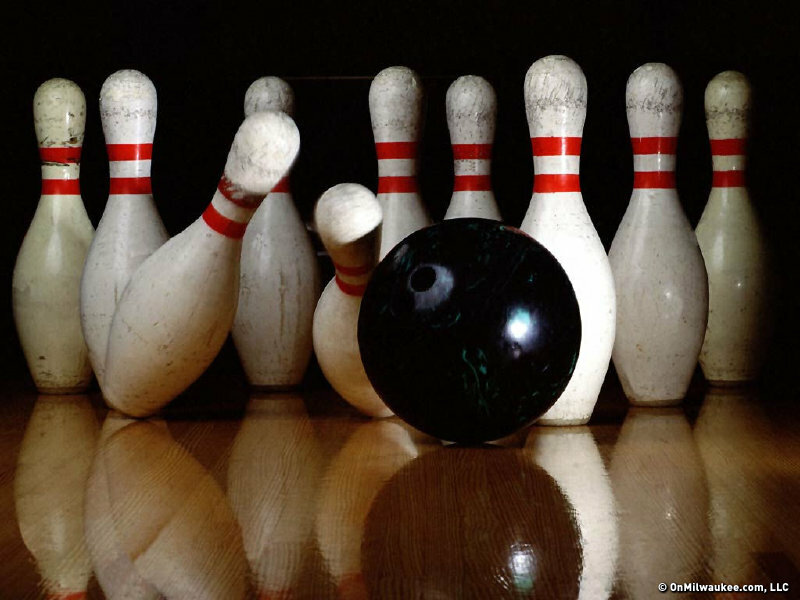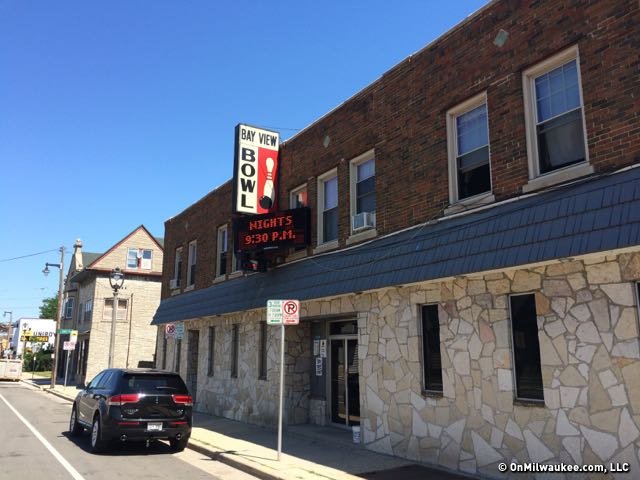Despite our sometimes desperate attempts to shake off the stereotypes, Milwaukee retains its image as a hard-workin' beer, brats and bowling town. With a bronze Fonz on tap and the Brewers season boosting the urge to tailgate, maybe we're getting comfortable with the image.
Certainly, we're not ashamed to bowl.
"Name another participation sport that allows you to compete rain or shine; allows you to socialize with friends and opponents while you compete; provides statistical results of every game you play," says Doug Schmidt, author of the vibrant and readable, "They Came to Bowl: How Milwaukee Became America's Tenpin Capital," published in paperback by Wisconsin Historical Society Press.
"And in what other sport does the ball automatically come back to you no matter how bad you throw it?"
Schmidt, an active league bowler for 38 years and a veteran writer on the sport, says Milwaukee was a natural place for bowling to settle in as a major sport.
"Bowling's popularity grew out of the wave of German immigrants who began arriving in Milwaukee during the mid 1800s and the advent of the Industrial Revolution in the early 1900s. Bowling was an extension of German religious and cultural values -- even Martin Luther had a bowling alley in his home.
"It was accentuated by the Milwaukee beer barons who incorporated bowling into their lavish parks and beer gardens. When Milwaukee became a manufacturing hub of the Midwest, it's blue-collar workforce headed to the saloons for a few schooners of their favorite brew, a game of schafskopf and some kegeling. Streetcars and trolleys linked the neighborhoods to the factories and taverns."
In 1924, Milwaukee had a record-setting 760 bowling teams and 2,766 league bowlers, surpassing much larger cities like Chicago and Philadelphia, where the sport was also popular. Eleven years later, Schmidt notes, Milwaukee was fifth in the nation in the number of bowling league with 200. Chicago was tops with 493, but had nearly six times the population of Brew City.
Schmidt writes in the book that Milwaukee's religious community also embraced bowling, which in a city full of steeples didn't hurt the popularity of the game, either.
"In its earliest incarnation, bowling was a German religious rite before it ever became recognized as a sport," he says. "At least a dozen Milwaukee churches -- predominantly Lutheran -- installed two to four lanes in their basements for socializing. Milwaukee's second great wave of immigrants were Polish who were almost exclusively Catholic and some of their parishes adopted bowling as a wholesome cultural activity as well."
Bowling hasn't managed to maintain its dominance here, however, thanks to TV, video games and all the other distractions available, but the sport hasn't exactly landed in the gutter here, either, says Schmidt.
"Bowling will always have a niche in Milwaukee, but it will never reach the heights of sanctioned competition it enjoyed through the 1970s. We live in a much faster-paced world. Fewer people are interested in long term commitments -- whether it is to a bowling league or a marriage.
"Bowling has a viable future as long as industry leaders right down through the local proprietors make a concerted effort to market the game as a lifetime activity. It's a safe social activity for youths -- whether they discover bowling through youth leagues, a high school letter sport or simply as a fun night out with friends. Bowling is still the number one participation sport in the country with 3 million sanctioned members, but that doesn't even include thousands more who have discovered the game as a healthy form of recreation in open play."
Despite Milwaukee's love affair with kegeling, "They Came to Bowl" is the first comprehensive look at the history of the sport in the city. The most recent "good history" of bowling, according to Schmidt, was Herman Weiskopf's "The Perfect Game" article in Sports Illustrated in 1978.
After 15 years publishing Wisconsin's Ten Pin Journal newspaper, Schmidt decided it was time to correct that situation.
"About six or seven years ago, I started thinking that Milwaukee has such a rich, colorful bowling history that it's a story that should be told," he recalls. "In 1978, Robert Wells published a book called, ‘This Is Milwaukee.' It was such an enlightening and entertaining history of this city that I read it twice and I thought, ‘this is the kind of story I would like to write about bowling.' I wanted to write something that displayed the human side of Milwaukee's numerous great bowlers and industry leaders and how they reflected Milwaukee culture. Mr. Wells was my inspiration."
The result is a detailed examination of the sport, of the places and the people in Milwaukee that made the game so beloved here. Schmidt also explains how the main governing bodies of the sport came to be headquartered here.
With a bevy of photos and a comprehensive list of all Milwaukee's bowling houses over the years, it's a fun read and informative at the same time.
Schmidt says he'd consider doing a follow-up, too, in the future.
"I would definitely like to write another book. If I were to write another bowling history, I'm sure cities like Chicago, St. Louis, New York and Detroit would have equally entertaining material to unveil. However, it took me five years to research and write ‘They Came to Bowl' on a part-time basis and I'd like to write something that requires less fact-checking. I'm thinking about doing a collection of my dating experiences. It would be called, 'Musicians Always Get the Girls, So Why Did I Become a Writer?'"
Born in Brooklyn, N.Y., where he lived until he was 17, Bobby received his BA-Mass Communications from UWM in 1989 and has lived in Walker's Point, Bay View, Enderis Park, South Milwaukee and on the East Side.
He has published three non-fiction books in Italy – including one about an event in Milwaukee history, which was published in the U.S. in autumn 2010. Four more books, all about Milwaukee, have been published by The History Press.
With his most recent band, The Yell Leaders, Bobby released four LPs and had a songs featured in episodes of TV's "Party of Five" and "Dawson's Creek," and films in Japan, South America and the U.S. The Yell Leaders were named the best unsigned band in their region by VH-1 as part of its Rock Across America 1998 Tour. Most recently, the band contributed tracks to a UK vinyl/CD tribute to the Redskins and collaborated on a track with Italian novelist Enrico Remmert.
He's produced three installments of the "OMCD" series of local music compilations for OnMilwaukee.com and in 2007 produced a CD of Italian music and poetry.
In 2005, he was awarded the City of Asti's (Italy) Journalism Prize for his work focusing on that area. He has also won awards from the Milwaukee Press Club.
He has be heard on 88Nine Radio Milwaukee talking about his "Urban Spelunking" series of stories, in that station's most popular podcast.







